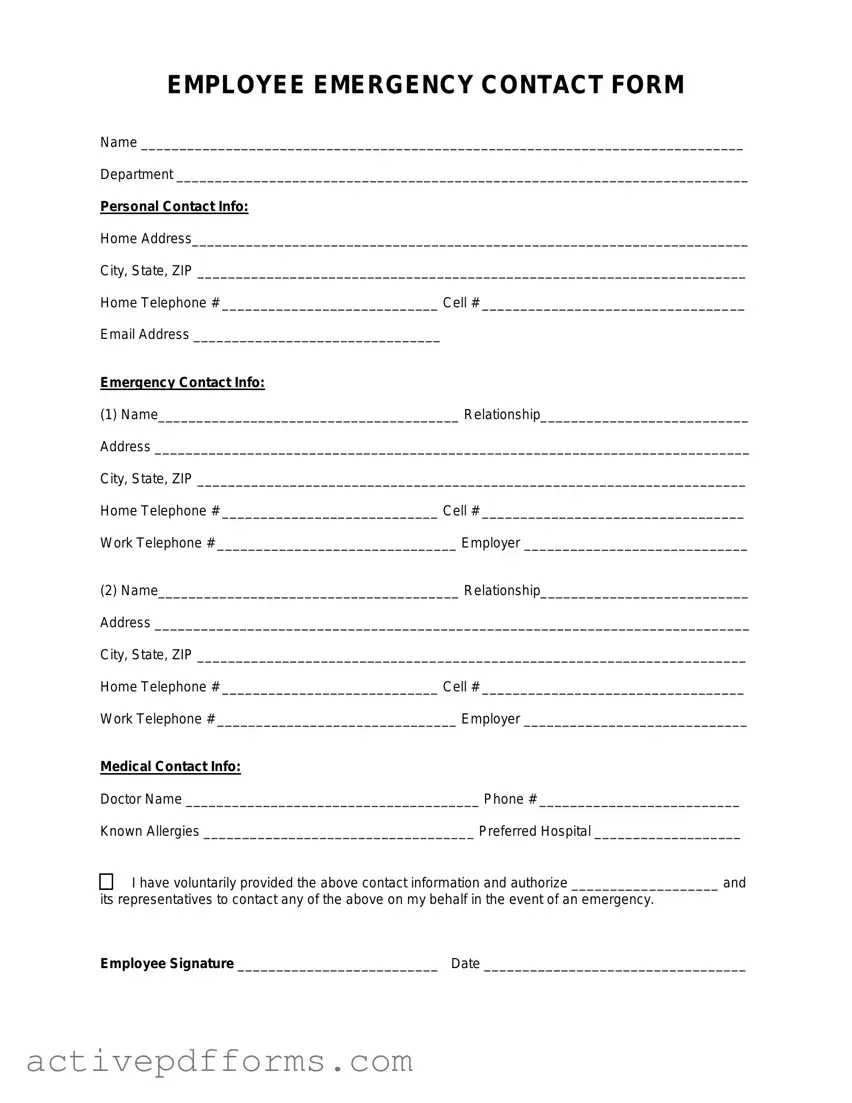EMPLOYEE EMERGENCY CONTACT FORM
Name ______________________________________________________________________________
Department __________________________________________________________________________
Personal Contact Info:
Home Address________________________________________________________________________
City, State, ZIP _______________________________________________________________________
Home Telephone # ____________________________ Cell # __________________________________
Email Address ________________________________
Emergency Contact Info:
(1)Name_______________________________________ Relationship___________________________
Address _____________________________________________________________________________
City, State, ZIP _______________________________________________________________________
Home Telephone # ____________________________ Cell # __________________________________
Work Telephone # _______________________________ Employer _____________________________
(2)Name_______________________________________ Relationship___________________________
Address _____________________________________________________________________________
City, State, ZIP _______________________________________________________________________
Home Telephone # ____________________________ Cell # __________________________________
Work Telephone # _______________________________ Employer _____________________________
Medical Contact Info:
Doctor Name ______________________________________ Phone # __________________________
Known Allergies ___________________________________ Preferred Hospital ___________________
I have voluntarily provided the above contact information and authorize ___________________ and its representatives to contact any of the above on my behalf in the event of an emergency.
